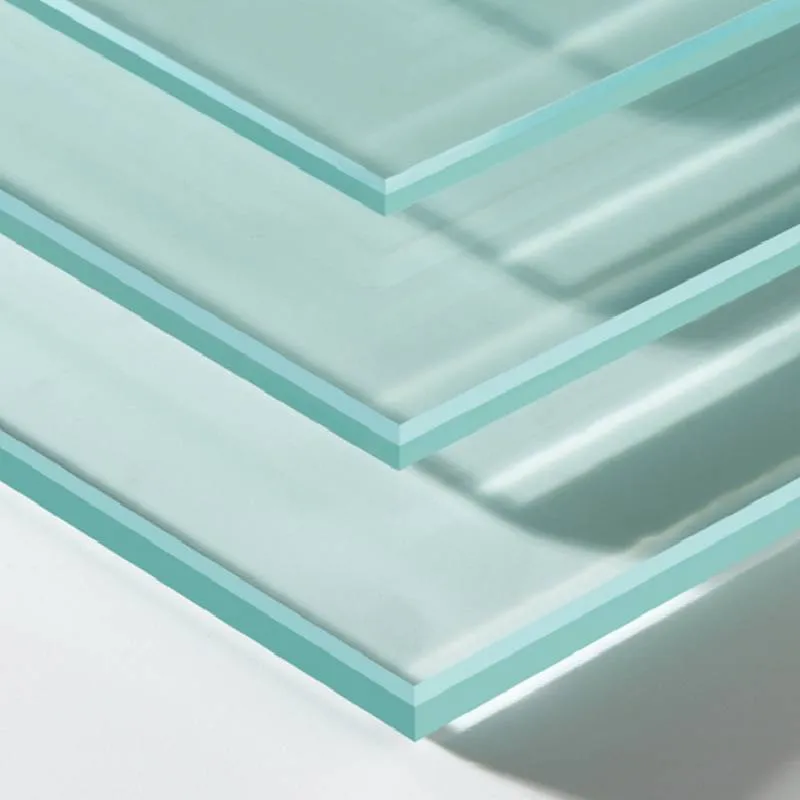Low iron float glass, known for its exceptional clarity and purity, has become increasingly popular in various applications ranging from architecture to automotive industries. Unlike standard float glass, low iron float glass contains significantly reduced levels of iron oxide, which can impart a greenish tint to traditional glass, particularly at thicker dimensions. By minimizing the iron content, low iron float glass achieves a much higher light transmission, allowing more natural light to pass through without distortion or color alteration.
The manufacturing process of low iron float glass involves the same fundamental steps as conventional float glass but uses raw materials that have been carefully selected to minimize impurities. The result is a product that not only appears clearer but also has superior qualities for specific applications. Low iron float glass is particularly valued in modern architectural designs where large glass panels are used, allowing for unobstructed views and enhanced aesthetic appeal. Buildings featuring low iron glass can create lighter, brighter environments, significantly reducing the need for artificial lighting during the day.
In addition to its aesthetic advantages, low iron float glass is also energy efficient
. By allowing more natural light to penetrate, it helps reduce reliance on electric lighting, thereby lowering energy consumption in commercial and residential spaces. Furthermore, this type of glass can be treated with additional coatings that improve thermal insulation and UV protection, making it an excellent choice for energy-efficient buildings.
low iron float glass
Beyond architecture, low iron float glass is also widely utilized in the automotive industry. Windshields and windows made from this type of glass offer greater visibility and clarity, which are critical for safety. In vehicles, clearer glass translates to a more enjoyable driving experience and enhanced passenger comfort.
Moreover, the potential for recycling low iron float glass contributes to sustainable building practices. As the demand for eco-friendly construction materials grows, low iron glass stands out as a responsible choice for architects and builders aiming to create beautiful, functional, and environmentally friendly structures.
In conclusion, low iron float glass represents an innovative solution for anyone looking to enhance visual clarity and energy efficiency in their projects. Its combination of aesthetic appeal, functionality, and sustainability makes it a favored material in both modern architecture and the automotive sector, paving the way for brighter and more transparent environments.
 Afrikaans
Afrikaans  Albanian
Albanian  Amharic
Amharic  Arabic
Arabic  Armenian
Armenian  Azerbaijani
Azerbaijani  Basque
Basque  Belarusian
Belarusian  Bengali
Bengali  Bosnian
Bosnian  Bulgarian
Bulgarian  Catalan
Catalan  Cebuano
Cebuano  Corsican
Corsican  Croatian
Croatian  Czech
Czech  Danish
Danish  Dutch
Dutch  English
English  Esperanto
Esperanto  Estonian
Estonian  Finnish
Finnish  French
French  Frisian
Frisian  Galician
Galician  Georgian
Georgian  German
German  Greek
Greek  Gujarati
Gujarati  Haitian Creole
Haitian Creole  hausa
hausa  hawaiian
hawaiian  Hebrew
Hebrew  Hindi
Hindi  Miao
Miao  Hungarian
Hungarian  Icelandic
Icelandic  igbo
igbo  Indonesian
Indonesian  irish
irish  Italian
Italian  Japanese
Japanese  Javanese
Javanese  Kannada
Kannada  kazakh
kazakh  Khmer
Khmer  Rwandese
Rwandese  Korean
Korean  Kurdish
Kurdish  Kyrgyz
Kyrgyz  Lao
Lao  Latin
Latin  Latvian
Latvian  Lithuanian
Lithuanian  Luxembourgish
Luxembourgish  Macedonian
Macedonian  Malgashi
Malgashi  Malay
Malay  Malayalam
Malayalam  Maltese
Maltese  Maori
Maori  Marathi
Marathi  Mongolian
Mongolian  Myanmar
Myanmar  Nepali
Nepali  Norwegian
Norwegian  Norwegian
Norwegian  Occitan
Occitan  Pashto
Pashto  Persian
Persian  Polish
Polish  Portuguese
Portuguese  Punjabi
Punjabi  Romanian
Romanian  Russian
Russian  Samoan
Samoan  Scottish Gaelic
Scottish Gaelic  Serbian
Serbian  Sesotho
Sesotho  Shona
Shona  Sindhi
Sindhi  Sinhala
Sinhala  Slovak
Slovak  Slovenian
Slovenian  Somali
Somali  Spanish
Spanish  Sundanese
Sundanese  Swahili
Swahili  Swedish
Swedish  Tagalog
Tagalog  Tajik
Tajik  Tamil
Tamil  Tatar
Tatar  Telugu
Telugu  Thai
Thai  Turkish
Turkish  Turkmen
Turkmen  Ukrainian
Ukrainian  Urdu
Urdu  Uighur
Uighur  Uzbek
Uzbek  Vietnamese
Vietnamese  Welsh
Welsh  Bantu
Bantu  Yiddish
Yiddish  Yoruba
Yoruba  Zulu
Zulu 

